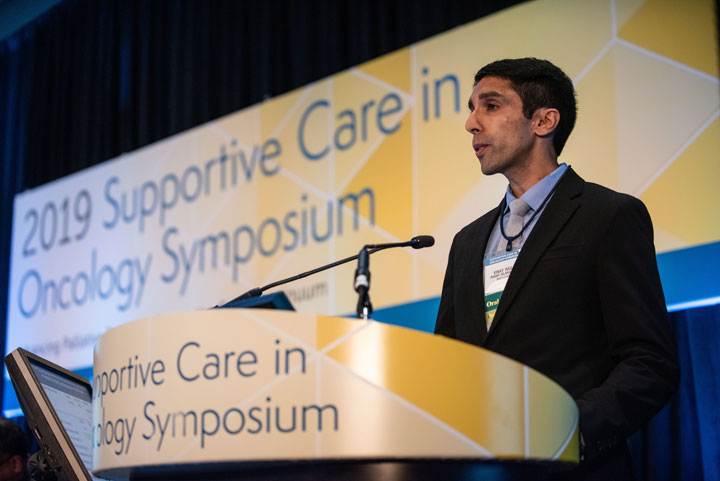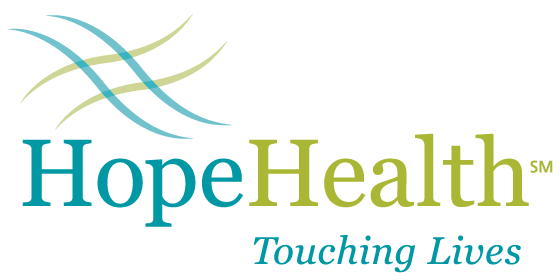When less is more: the benefits of less aggressive health care

From artificial hearts and breathing machines to molecular cancer therapy, health care providers have more tools than ever to help people fight disease and live longer.
But is aggressive treatment always better, in all instances, for all people?
“It depends,” says Dr. Vinay Rao, a palliative care physician from HopeHealth and patient advocate.
“We’re really thankful to have that technology, but we should also keep in mind that when we're sick, more isn't necessarily better. In some cases more treatments or procedures could actually cause more harm than benefits.”
Dr. Rao provides an extra layer of support to cancer patients by working hand-in-hand with oncologists and other specialists.
“Receiving a cancer diagnosis or facing any serious illness is really hard. Patients can experience many different emotions including fear of the unknown. We walk with patients along their journey, attend to their emotions, and try to alleviate some of their fears,” he explains.
The hallmarks of palliative care are symptom management and two-way communication with patients. Practitioners can prescribe special medications to ease symptoms like pain, nausea, shortness of breath, etc. They also make sure patients understand their disease, prognosis and the pros and cons of treatment options.
Finally, palliative care providers ask patients two critical questions: what brings you joy right now and what would you want your care to look like if we are finding that your health continues to worsen?
I just love being able to connect with patients and make some sort of meaningful difference in their lives.
What is quality end-of-life care?

Researchers define quality end-of-life care in terms of things they can measure. It is generally understood that patients at the end-of-life wish to avoid multiple emergency room visits, hospitalizations, and intensive care admissions. Instead, many of these patients want comfort-focused care which can be measured by hospice utilization.
However, every patient is unique, which is why palliative care providers empower patients to voice what is important to them, what they are willing to tolerate and what is non-negotiable throughout the course of their illness and treatment.
For some people with a serious illness, simply waking up every day is quality of life. They might wish to live long enough to see a wedding or the birth of a grandchild, so aggressive interventions like breathing machines or chemotherapy make sense.
Others might feel differently. Some individuals, perhaps bed bound or suffering from pain or intense treatment side effects, might decide life-prolonging measures are not the best choice and hospice or comfort care can improve their quality of life.
According to Dr. Rao, some patients discover that aggressive care is actually distracting them from other end-of-life priorities, like spending time with family, financial planning or nurturing their spirituality.
“These priorities may seem benign or less serious, but they are really important things to people that we as medical professionals sometimes forget,” he adds.
I just love being able to connect with patients and make some sort of meaningful difference in their lives.
What the science says
When should patients with a life-limiting illness receive a palliative care consult? The earlier, the better—according to a 2019 population study co-authored by Dr. Rao and funded by the American Cancer Society.

Analyzing data from Medicare beneficiaries, here is what he found:
- People with blood cancers like leukemia or lymphomas are more likely to receive aggressive care at the end of life than patients with solid tumors. This is likely because doctors find it particularly difficult to predict life expectancy with blood cancers.
- Only 1.7 percent of the sampled blood cancer patients received a palliative care consult in the early stage of the disease.
- Despite this low rate for early palliative care, those patients were less likely to have had hospitalizations, ED visits, ICU admissions or chemotherapy within 14 days of death and more likely to have increased hospice use at the end of life.
What’s the take-away? Palliative care is beneficial, but underutilized. Dr. Rao hopes his research will spark further studies on barriers to receiving palliative care and the best time to start consults.
In the meantime, he is helping patients make informed choices in the most vulnerable time of their life.
“I just love being able to connect with patients and help them find some sort of meaning during a very difficult time in their lives,” he says.

